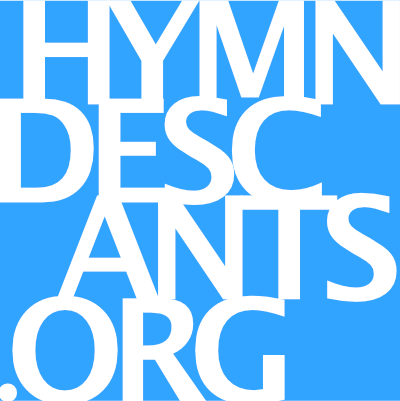Descant to the hymn tune DIADEMATA (ed. Oct. 2024)
Audio [ad lib: prologue | hymnal harmonization (Elvey) | SATB a cappella | bridge ad lib.| descant Free score.
unison
Crown him with many crowns,
The Lamb upon his throne;
Hark! how the heavenly anthem drowns
All music but its own:
Awake, my soul, and sing
Of him who died for thee,
And hail him as thy matchless king
Through all eternity.
satb a cappella
Crown him the Son of God
Before the worlds began,
And ye, who tread where He hath trod,
Crown him the Son of Man;
Who every grief hath known
That wrings the human breast,
And takes and bears them for His own,
That all in him may rest.
descant
Crown him the Lord of heaven,
Enthroned in worlds above;
Crown him the king, to whom is given
The wondrous name of Love,
Crown him with many crowns,
As thrones before him fall.
Crown him, ye kings, with many crowns,
For He is King of all.
The first publication of DIADEMATA by George Elvey (1816-1893) was in the 1868 Appendix to Hymns Ancient and Modern. At age 19, Elvey became organist/choirmaster of St. George's Chapel, Windsor (yes, that St. George's Chapel) where he ministered until retirement, 66 years later. He composed Anglican chants, anthems, services, part songs, oratorios, and hymn tunes, of which DIADEMATA is his best known (ST GEORGE'S WINDSOR, Come ye thankful people come, is also in wide use). From the beginning, DIADEMATA has been associated with Crown him with many crowns, a composite of stanzas by Matthew Bridges (1851) and Godfrey Thring (1874), based on a verse from Revelation: "on his head are many crowns." Each wrote six verses, the latter out of concern that Bridge's "The song of the seraphs" was too close to Roman doctrine, particularly due to references to Mary; Bridges was active in the Oxford Movement and like the movement's founders, he eventually left the Church of England to become a Roman Catholic. The hymn was included in the 1868 appendix to Hymns Ancient and Modern, setting on a course to its now well-established pre-eminence for the Feast of Christ the King.
References
- History of Hymns, UMC Discipleship Ministries: “Crown him with many crowns”, C. Michael Hawn
- Wikipedia: entry on George Elvey
Descant verse:
Crown him the Lord of heaven, enthroned in worlds above;
crown him the King,to whom is given, the wondrous name of Love.
Crown him with many crowns, as thrones before him fall,
crown him, ye kings, with many crowns, for he is King of all.
– Matthew Bridges, 1800-1894

